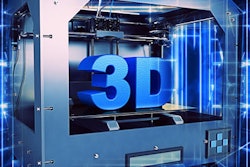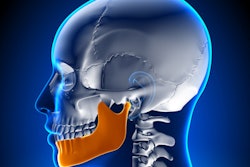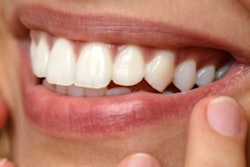
The potential for 3D printing technology to change the way facial reconstruction surgery is performed is being realized in the U.K. Doctors have successfully used 3D-printed titanium plates to rebuild the face of a man who was severely injured in a motorcycle accident, one of the first in the world to receive this type of treatment.
The advantages of 3D printing technology are numerous -- and potentially life-changing for patients. The procedure is now part of an exhibit, called "3D: Printing the Future," that will be on display until July 2014 at the Science Museum in London.
"3D printing implants give surgeons the ability to customize implants to each patient so it's a perfect fit and surgery is faster," Elise Allthorpe-Mullis, a content developer at the Science Museum, explained in an email to DrBicuspid.com. "Inventors, entrepreneurs, researchers, and hobbyists all around the world are using 3D printing to bring their designs to life. It is a real explosion of creativity."
The recipient, Stephen Power of Cardiff, Wales, was wearing a helmet during a crash in 2012 that put him in the hospital for four months with multiple traumatic injuries: a skull fracture, two broken cheekbones, and a broken nose. He does not recall the accident. Doctors hoped to restore the facial symmetry he had lost. Power is elated with the results, according to an article by the BBC.
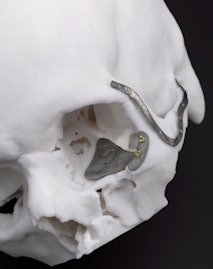
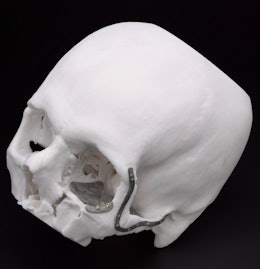 A rendering of the printed titanium plates used to reconstruct Stephen Power's face after a motorcycle accident. Images courtesy of the Science Museum.
A rendering of the printed titanium plates used to reconstruct Stephen Power's face after a motorcycle accident. Images courtesy of the Science Museum.The process was created by the Centre for Applied Reconstructive Technologies in Surgery in Cartis, a collaboration between doctors at Morriston Hospital in Swansea and scientists at Cardiff Metropolitan University.
First, doctors took CT scans of Power's face to create a symmetrical computer model of his skull. At this stage, the surgeon is able to practice the surgery before performing it on the patient.
"Once they see that the reconstruction works on the computer, they can print a physical model of the damaged skull and replicate the surgery," Allthorpe-Mullis wrote.
A significant amount of collaboration is needed among the specialists involved. "The researchers then work with the surgical team to design an implant to fix the damaged bone and replace bone which is beyond repair," Allthorpe-Mullis stated. "They can also design guides to use in surgery that tell them exactly where to cut and position the bones." Cutting guides and printed matching plates were made next by a medical-grade titanium 3D printing machine in Belgium.
“It would be hard to achieve significant improvement with freehand reconstruction.”
Museum, London
"3D printing in metal works by laying down a layer of powdered metal and using a high-powered laser to fuse the metal together into the shape of the first cross-section of the object," Allthorpe-Mullis noted. "Another layer of powder is then laid down on top and the process repeated, until the completed item has been built up in layers." With 3D printing, clinicians could sidestep the imprecise procedure of bending metal plates into the desired shape of the reconstructive implants.
During an eight-hour procedure, doctors at Morriston Hospital broke Power's cheekbones with cutting guides before beginning the reconstruction phase. "According to the surgeon, this patient's injury was especially challenging: The injuries were so severe it would be hard to achieve significant improvement with freehand reconstruction," Allthorpe-Mullis explained. With 3D printing, much of the "guesswork" that makes facial reconstruction surgery so difficult is eliminated. "3D-printed guides and implants can be used like stencils to help surgeons cut and reposition bones in precisely the right place to achieve the best results," she added.
Researchers hope that 3D printing will be employed by other hospitals for similar operations, fine-tuning the process and reducing costs. It is one of many medical applications for the technology. Medical researchers are printing with body-friendly materials to create scaffolds to regrow bone, or even ears and noses," Allthorpe-Mullis noted. "The things people are printing could potentially change our future."




